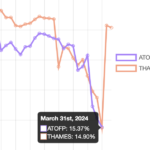Senator Susan Collins is a well-known figure in US politics. Attacked from the left for not blocking the Supreme Court nomination of controversial judge Brett Kavanagh and attacked from the right for being a RINO (Republican in name only), Collins is less well-known for her impact on the capital strategies of large US banks.
The amendment that bears her name was tacked onto the 2012 Dodd-Frank Act, the omnibus post-crisis regulation that transformed supervision of US banks. Under Dodd-Frank, Basel III internal models – known as advanced approaches in the US – would be applied to all US banks with more than $250 billion assets. For the first time, bespoke credit models used by large European banks would cross the Atlantic.
Then came the Collins Amendment. This imposed a backstop using standardised risk models with much less freedom for banks to optimise loan loss and recovery assumptions. If the capital requirement for standardised model was greater than the one for advanced, then standardised would be applied instead in the denominator of the key CET1 ratio.
 Levelling the Playing Field
Levelling the Playing Field
 Barclays and Labour's growth plan
Barclays and Labour's growth plan
 Plummeting bonds reflect souring UK mood for outsourcing and privatisation
Plummeting bonds reflect souring UK mood for outsourcing and privatisation
 Dimon rolls trading dice with excess capital
Dimon rolls trading dice with excess capital